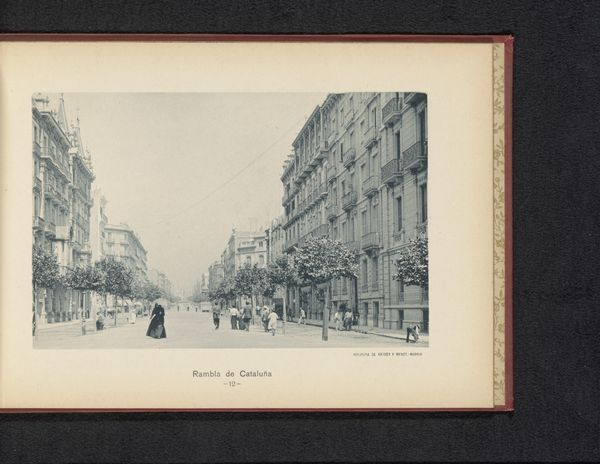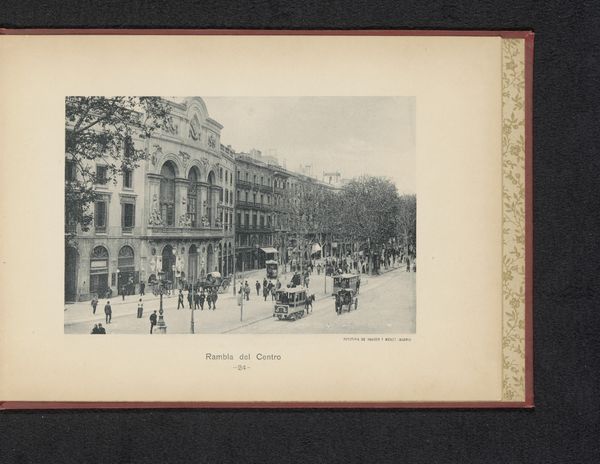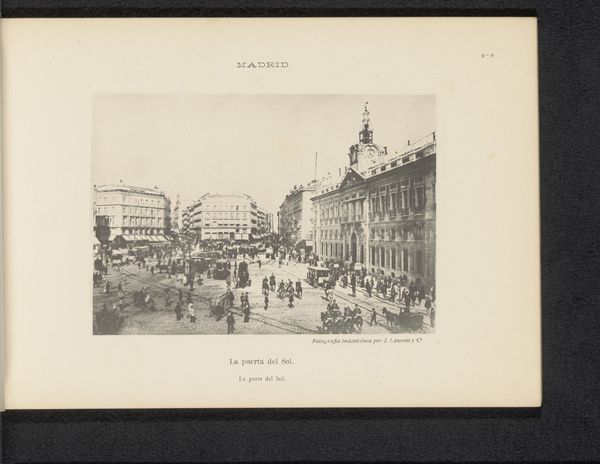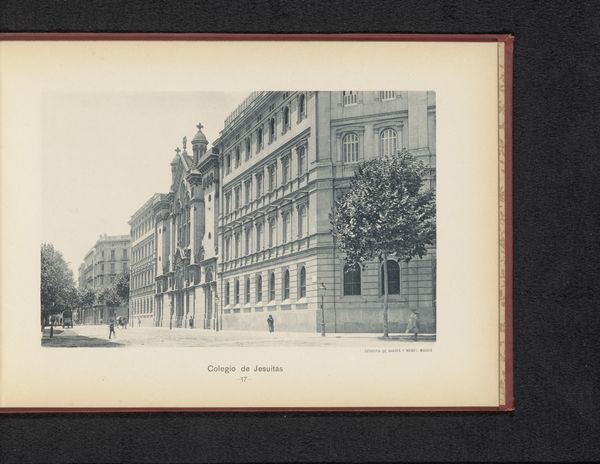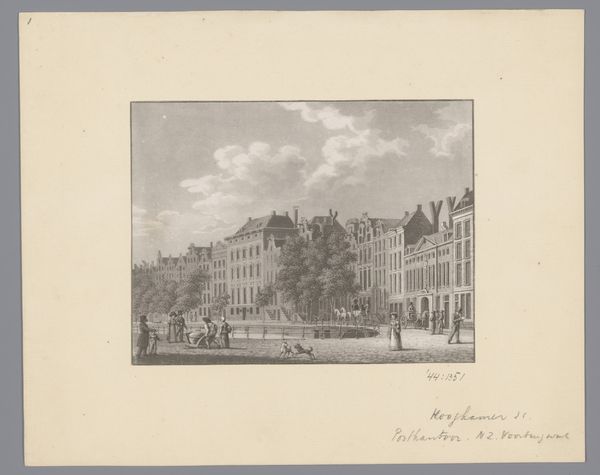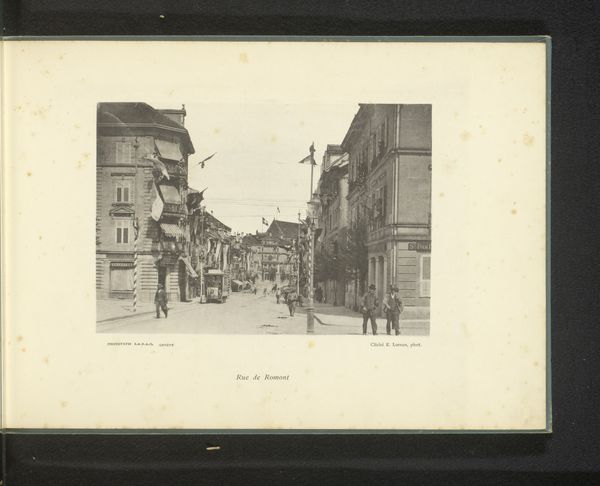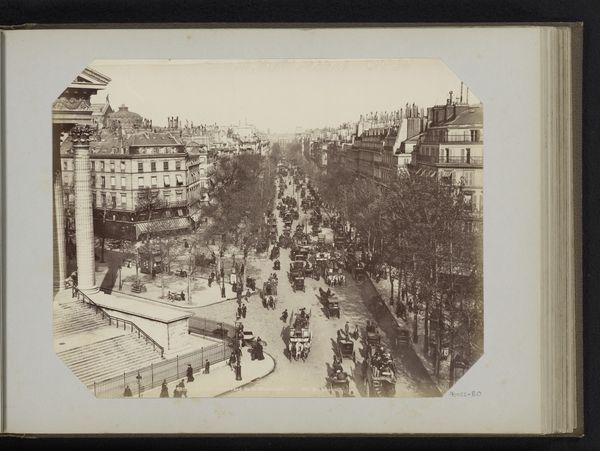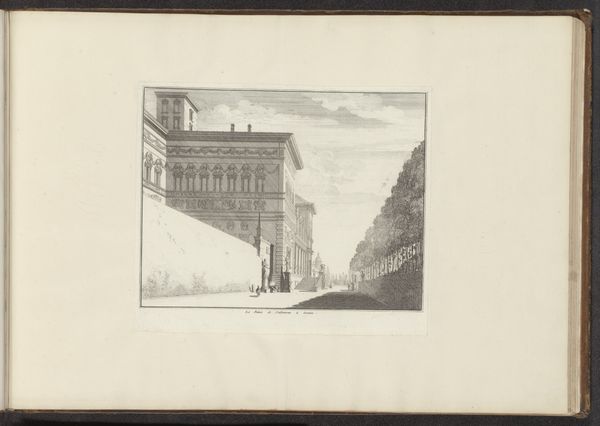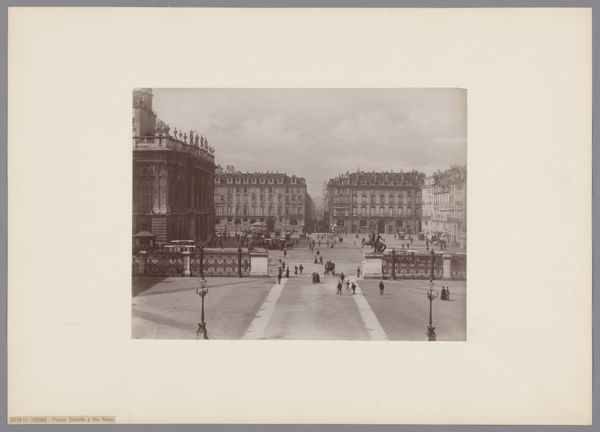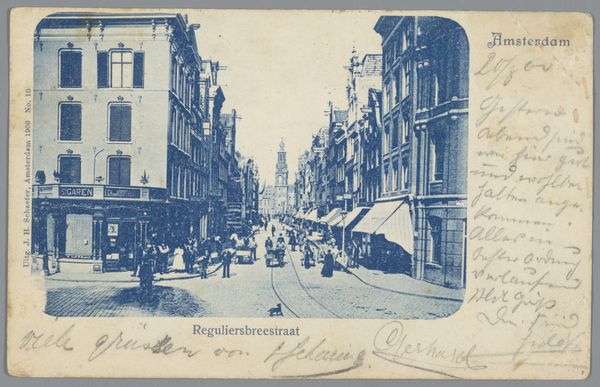
photography
#
aged paper
#
toned paper
#
homemade paper
#
sketch book
#
white palette
#
paper texture
#
photography
#
personal sketchbook
#
coloured pencil
#
cityscape
#
realism
#
historical font
Dimensions: height 110 mm, width 170 mm
Copyright: Rijks Museum: Open Domain
Curator: Before us, we have an early photographic print entitled "Gezicht op de Gran Via de les Corts Catalanes in Barcelona," attributed to Hauser y Menet and taken sometime before 1890. What are your initial impressions? Editor: It feels incredibly still. Like a moment suspended in time. The hazy quality almost turns Barcelona into a dreamscape, you know? It's got a sort of melancholy beauty, a sense of a city waking up but still quiet. Curator: I see what you mean about the stillness. That might come from how photography functioned as a medium then – long exposure times meant capturing the immobile, but also points to a moment of urban planning. The Gran Via was intended to be a symbol of modernity and progress in Barcelona. Editor: That makes sense. The trees lining the avenue, perfectly symmetrical, it’s like they're trying to control nature in the midst of this burgeoning city. There’s something very intentional, very… ordered about it all. Almost too much so. Does that order reflect something bigger, you think? Curator: Definitely. Look at how the eye is led down the wide avenue towards the horizon. That vanishing point, that light—it communicates a sense of infinite possibility, which aligns with the ambition that Barcelona had at this time, becoming a commercial and industrial hub. Editor: But that almost makes the figures, like the man in the center, seem smaller, insignificant even. Do you think there is an exploration about what it is to be human during rapid growth? Curator: Perhaps. The muted tones and the formality certainly add weight to the discussion. Consider that the avenue itself, designed in part by Ildefons Cerdà, sought to reorganize and sanitize the city, implementing then radical ideas about hygiene and social structure. This photographer shows the project’s ideal vision in action. Editor: That’s heavy, because now when I look at the picture, it's like there are so many stories hidden just beneath the surface. I initially saw only its calm appearance and melancholy, but hearing about how controlled its very creation was… well, now I have the unsettling image of something cold simmering behind the warm facade. Thanks! Curator: It’s precisely that tension—between aspiration and control—that I find so captivating here. A true capture of a pivotal moment in Barcelona’s ever-evolving urban identity.
Comments
No comments
Be the first to comment and join the conversation on the ultimate creative platform.
